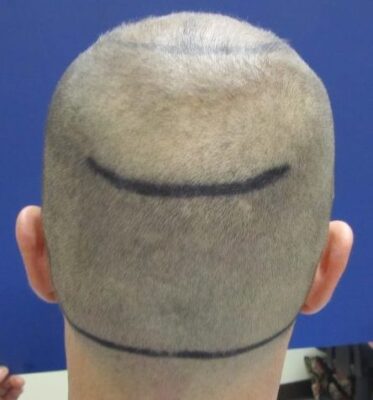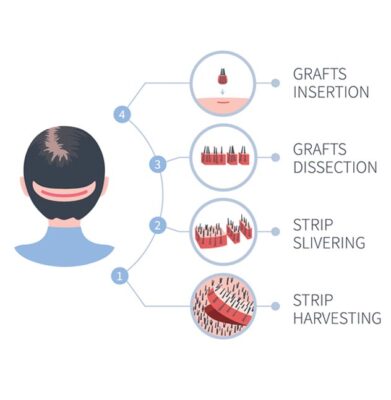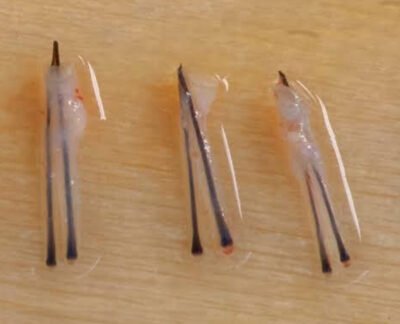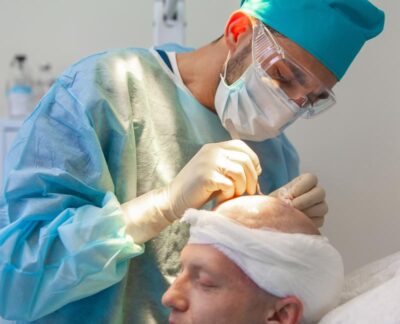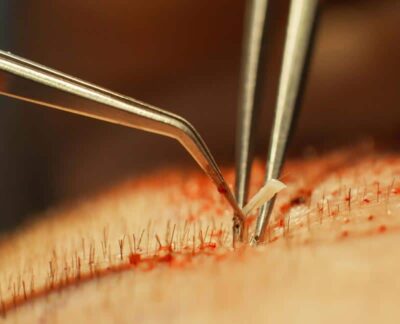The Following Steps Outline Your Hair Transplant Procedure.
Hair loss is both a hereditary condition and a natural occurrence due to aging. According to the U.S National Library of Medicine, approximately 50 million men and 30 million women are experiencing hair loss in the United States. They go on to say that 50% of men over 50 suffer from hair loss in varying degrees. The process of losing your hair can be difficult to manage, but the benefits of hair restoration go beyond appearance, providing you with newfound confidence and self-esteem. This page will outline what you can expect from a routine hair transplant procedure.
STEP 1
Hair Transplant Pre-Op Exam
Your doctor will review your Surgical Plan using My Hair MD’s proprietary hair restoration template. This ensures we extract the correct number of follicular/graft units while giving you the look and density you want. Next, the doctor will draw guidelines to clearly mark the hairline, top, and crown area.
STEP 2
Donor Optimization
Each patient is limited by the quantity of donor hair available. Donor density and scalp laxity are the key factors in determining the total hair reserves for each patient.
STEP 3
Removing Donor Tissue For Hair Transplant
FUG/Strip Method This area will be precisely measured and the hair will be trimmed slightly. The donor material is removed in the form of a strip using a fine scalpel. The donor site will be sutured with a Seamless Closure Technique to ensure proper healing and a fine line that is very difficult to detect. Lastly, after a period of ten days, the sutures can be safely removed.
FUE/Method The donor area in the back of the head will be shaved. Using The Follicular Unit Extraction method, hairs are extracted one at a time. This method takes considerably longer than the strip method and is both time-consuming and very tedious. There is no need for sutures when using The Follicular Unit Extraction method.
STEP 4
Isolating Follicular Units
The first process is to Isolate donor material and trim them into grafts. The naturally occurring follicular units are separated into groups of 1, 2, 3, and 4 units.
1 Follicular Unit – – 2 Units – – 3 Follicular Units

The photo shows naturally occurring follicular units of 1, 2, 3, and 4 hairs. We move these follicular units to the areas where you need more hair, resulting in a natural hairline that really grows.
STEP 5
Creating the Receptor Sites For Hair Transplant Procedure
First, the transplant site receives a local anesthetic. Shaving or trimming of the recipient area is not necessary.
Next, we use precision surgical instruments to create new receptor sites. These sites mimic the growth patterns of natural hair. The doctor will use the finest surgical instruments to recreate your new hairline ensuring greater density and optimal growth.
The photo shows naturally occurring follicular units of 1, 2, 3, and 4 hairs. We move these follicular units to the areas where you need more hair, resulting in a natural hairline that really grows.
STEP 6
Placing the Follicular Units
The staff will meticulously place 1, 2, 3 or 4 hair units at the correct angle, direction and pattern to exactly mimic your original hair. Carefully placing each graft into the scalp will allow enough blood to nourish the hair during the brief healing process and ensure maximum growth.
Following the surgery, you can expect hundreds of tiny incisions with short hair stubble showing from the new grafts. These incisions will heal in about a week.
Your surgeon will give you the maximum density that is medically safe and place each follicular graft as close as possible to achieve a thick, healthy look.
STEP 7
Recovery and End Result
More than 98% of these newly placed follicular hair clusters will survive, grow and within a week you will see hair follicles starting to grow. About 90 days later, the old hair shafts will fall out and they will start to grow new hairs!
As you continue with the recommended treatment, your hair will look thicker, denser, and totally natural. You can call our office and schedule another procedure whenever you wish. After about 6 months, the newly transplanted hair has fully grown out and you can book additional sessions if necessary.
Restore the Confidence You’ve Always Had!
- Natural Follicular Units
- Get Maximum Density
- Precise Measurements
- Presented a Surgical Plan
- Receive a Natural Hairline


